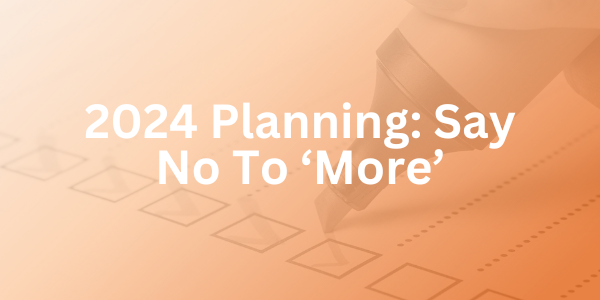
4 Ways B2B Buying Has Changed - And How Sales Must Adapt
4 Ways B2B Buying Has Changed – And How Sales Teams Must Adapt
According to a recent index of...
2023 was a challenging year for most SaaS businesses. According to research by Paddle, SaaS businesses witnessed unsatisfactory outcomes in key performance metrics, including increased Customer Acquisition Cost (CAC), dwindling growth rates, and more customer churn. These outcomes were not sudden – they’ve been emerging over the past three years.
When confronted with declining performance metrics, the knee-jerk reaction for many business leaders is to demand more – more resources, more effort, and more of the same strategies they've always used. However, the truth is that asking for more without changing the underlying approach is akin to simply turning up the volume on what has already proven to be ineffective. And as recent history has shown, this approach has yielded unsatisfactory results.
In this post, we'll delve into why pressing the "MORE" button in 2024 could be catastrophic – and what to do instead.
Over the last 3-5 years, the average SaaS business has seen a massive increase in operating cost. And in many cases, that operating cost is running parallel to or exceeding revenue. Consider the example below of a financial chart taken from a public SaaS business.
.png?width=500&height=281&name=DO%20NOT%20PRESS%20(1).png)
These trends are all results of ongoing issues, including:
And these issues are results of relying on traditional sales methodologies that thrived in the last 15+ years.
If your plan in 2024 is to do more of your existing strategy (more people, more training, more seller-centric tech), be prepared for:
And you can expect to be in an even worse position this time next year. History bears testament to the fate of enterprises that overlooked this imperative shift. Blockbuster, Barnes and Noble, and Yellow Cab succumbed to disruption because they relied on strategies that worked in the past rather than adapting to buyers’ evolving preferences.
Two significant changes have rendered existing GTM strategies ineffective.
First, B2B buying has changed drastically. Read the four biggest ways B2B buying has changed here. Buying practices, buyer demographics, and buyer preferences have all evolved. The sales methodologies that worked the last 20 years don’t align with how modern buyers buy, and the results show it.
Second, there’s been a paradigm shift from “growth at all costs” to sustainable, efficient growth. Boards, investors, and business leaders have recognized the need for a change and are referencing the rule of 40 to assess their sustainability. Look no further than the ongoing layoffs affecting hundreds of thousands of workers.
If your plan for 2024 is to press the “MORE” button, STOP. More is not the answer.
In the coming year, the key to success will be embracing change, realigning your strategies with the evolved B2B buying landscape, and prioritizing sustainable growth over reckless expansion.
The pivotal shift required in your GTM is placing the buyer at the epicenter of your strategy. Provide your buyers with the experience they actually want: a digital, on-demand, self service buying experience, while sales teams receives insights needed to guide buyers to a decision.
A shift is not devoid of its challenges. Yet, the rewards are immense. Every metric improves when you commit to a buyer-centric approach.
It's time to say no to "MORE" and yes to an effective, sustainable way forward.
Omedym customers are keeping operating costs low while increasing revenue growth rate year over year, all by providing a digital, self-service buying experience. Learn how you can create similar results within weeks, not months, and make 2024 a success.
Read what Omedym customers have to say about their experiences with the platform on G2.

According to a recent index of...

Welcome to our 'Say No To More' series, where we uncover the diminishing impact of current B2B...

Imagine that you’ve been tasked with finding a software solution for your business. What would your...
